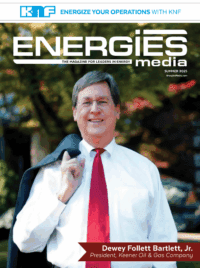I have worked in the field of safety for 15 years and have served the oil and gas industry for the majority of my career. Some of that time was spent in construction, but what I discovered was no matter what the industry, the traditional safety meeting succumbed to minor change in different workplaces. In fact, the safety meeting of the past shared the same format with one person speaking and an overload of statistics, cited regulations, and the push to achieve and maintain a zero incident workplace, so the company could continue to compete for profitable projects. While all factors have merit, the format grew tired and elicited complacency, a common threat that can infiltrate any safety culture.
I am not advocating for an escape from statistics, and I certainly believe regulations are important, but citing them should be purposed as a point of origin. As I have enjoyed a successful career, I know it was only made possible by the mentors who helped shape my way of thinking. Those mentors opened the door along the way for me to realize that a fruitful safety culture could only flourish through change, and it starts with the safety meeting.
Utilizing multiple vantage points
The traditional safety meeting is typically constructed and delivered by a single person, normally the company’s safety professional. While workplace safety encompasses all employees, delivery made by one person only provides a singular view of the culture itself. Although it is usually an unpopular approach because volunteers are minimal, drafting multiple employees from differing stations of the company allows for different vantage points to surface. How we see things influences workplace safety, and by hearing from different people, the workforce now becomes exposed to an expanded school of thought.
Tone plays an important role in delivering a message to a group. Utilizing a singular presenter can be risky. Public speaking is not everyone’s strong point and if the presenter loses the group’s interest, additional presenters can regain what is lost. Increased energy and change of tone can both save a safety meeting and intensify its affect of the message delivered.
Participation includes more than just speaking
After paying my dues and expanding my knowledge base, I have arrived at that point in my career when I hold the director level position, which allows me the ability to decide what the safety meeting will include and how the message will be delivered. I am a user of PowerPoint, but not a reader of screens. I use it as a support tool with key factors displayed, prompting me to stand, expand, and deliver.
Participation has become critical to my safety meeting delivery and has enhanced my success rate in delivering my message, but then I realized the message was not mine, but the group’s. The safety meeting is not mine alone, it belongs to the people who conduct the services offered by the company. Simply put, it is their safety meeting.
If the meeting belongs to the employees who I wish to deliver a message, I realized the participation factor should not just be limited to speaking. I began approaching members of the workforce and selecting them to develop a topic to deliver in this new safety meeting. Now, the art of successfully pulling this off comes with trust and assistance. Employees are busy with the tasks for which they were hired, and my goal has never been to saddle anyone with additional work on their off time. Meet them halfway and ask them to give it some thought, as they can, and be sure to give them plenty of time. I always make sure employees know that I’m just asking for some bullet points on a topic of their interest and I will create the slides for the shock and awe factor. I highly suggest creating the slide early and providing the employee with access to it for ample preparation time.
Success found in an outcome of discussion
After gathering your presenters and creating the supporting tools for their reference, it is time to deliver the message. At first, it might seem unconventional, and in some respects, the safety professional could even appear to be slacking from his or her duties. I highly recommend sticking with it because the outcome is truly eye-opening.
Your audience might seem thrown by this change in format. Let’s face it, most do not like change in any aspect. As the topics are delivered and that new vantage point is revealed, I guarantee something monumental will surface and that is discussion. Your audience will electrify, show interest, and exuberate participation through discussion. Before you know it, as a safety professional, the room will be working in itself, and everyone will be offering life lessons, experience, and opinions on the topic at hand.
While some might see this as upsetting and fear disruption, the safety professional should allow the free thought to flow but maintain the course and keep the discussion on track. Refrain from stifling the discussion, but instead, find ways and offer a bridge to continue our newly discovered free thinkers the opportunity to discuss the topic at hand.
Analyzing the takeaway
Safety professionals tend to get hung up on their moment to speak. It is critical to remember that the ownership of the meeting belongs to the audience. Facilitating participation and encouraging discussion leads to a lasting delivery of the message at hand.
I have analyzed the success rate of my new safety meeting format. While I still feel guilty at times that I make people exit their comfort zones and speak before a group, I cannot deny the success this new process has found. Not only are past presenters offering to assist in upcoming meetings, but their confidence in discussing workplace safety has skyrocketed. They have taken ownership and feel comfortable in raising concerns, but also in offering suggestions for improvement.
I can remember public service announcements from my childhood urging parents to discuss critical issues with their children and create a channel of openness. Much in the same way, the art of discussion has revolutionized these new safety meetings. With this new format, my audience comes to their safety meeting with interest and energy to ensure the ability to work safely each day. As a result, our zero incident culture is maintained and fortified, providing a solid foundation for us as a company to build upon for the future.
Nick Vaccaro is a freelance writer and photographer. In addition to providing technical writing services, he is an HSE consultant in the oil and gas industry with twelve years of experience. Vaccaro also contributes to SHALE Oil and Gas Business Magazine, American Oil and Gas Investor, Oil and Gas Investor, Energies Magazine and Louisiana Sportsman Magazine. He has a BA in photojournalism from Loyola University and resides in the New Orleans area. Vaccaro can be reached at 985-966-0957 or nav@vaccarogroupllc.com.







